When you finish the last of the repotting – and breath a sigh of relief – it’s time to sit back and let the trees grow into their new homes.
While the trees are busy sending out new roots, our main job is protecting them from the elements.
The number one enemy is cold temperatures. Many cold-tolerant species can handle brief overnight lows at or just below freezing, but don’t hesitate to protect weak trees, small trees, and precious trees from freezing.
When temperatures drop lower or fail to warm up after a few hours, it’s best to keep these trees in a protected space like a workshop or garage.
The next thing to watch for is excessive wind. Repotted trees are generally OK in a gentle breeze, but strong or sustained wind can dry trees quickly. When possible, protect recently repotted trees from strong wind. This might mean moving trees against a wall or fence during a windy spell, taking them into the workshop, or placing them on the ground.
Finally, make sure repotted trees get enough water. The best thing about caring for recently repotted trees is that it’s hard to over-water as the excess typically drains freely after we repot.
I overhead water a lot in early spring to keep foliage cool as this takes some of the burden away from the roots. As for watering the soil, I typically water when the surface of the soil is dry.
Here are some examples.
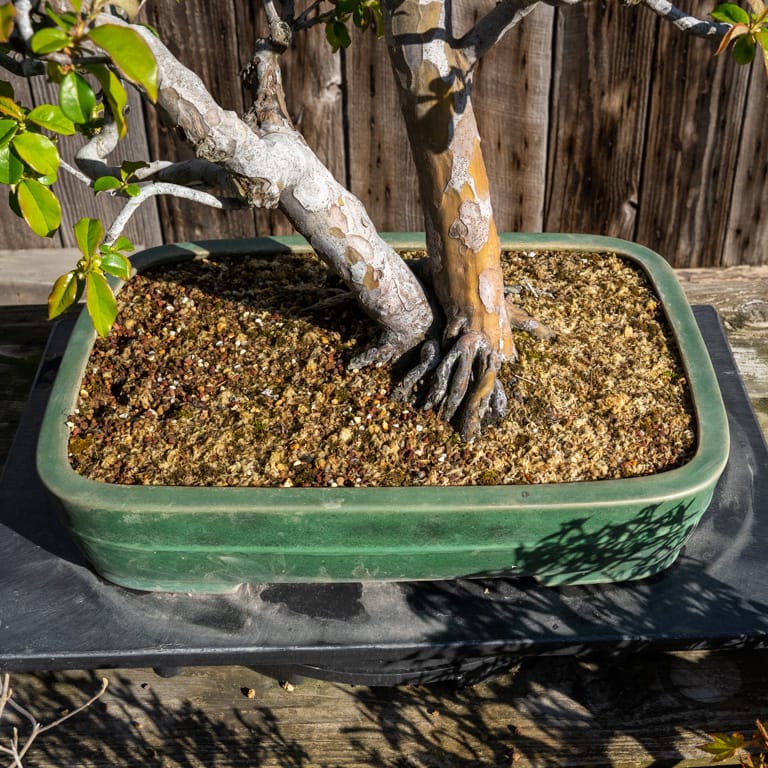
Wet surface soil
The Chinese quince above doesn’t need watering as the moss on the surface of the soil is still wet.
By the next day the soil had dried out so I watered as usual.
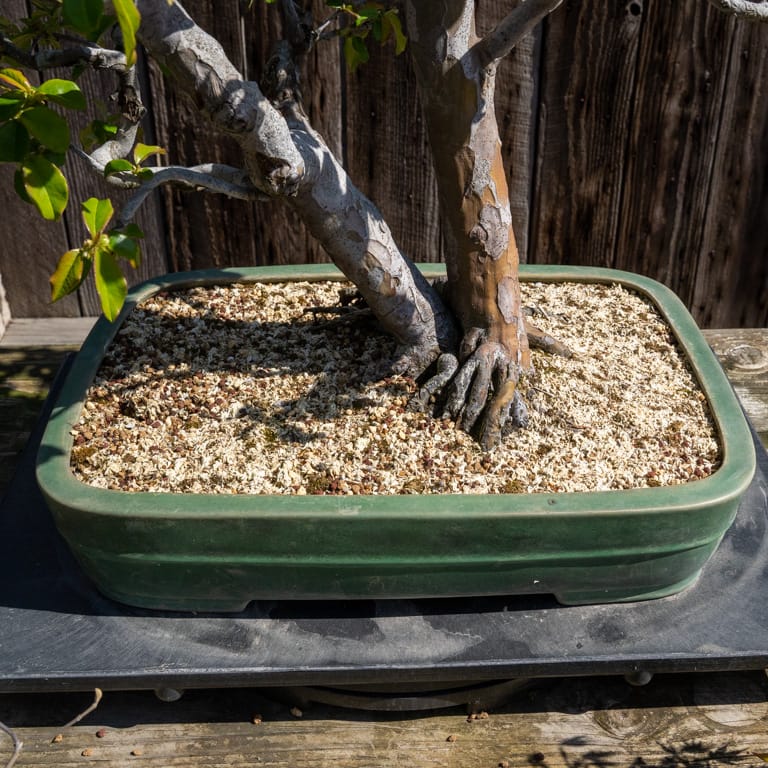
Dry soil indicates that tree is ready to be watered
I can go either way when the surface of the soil is partially dry. When this is the case, I’ll go ahead and water deciduous trees but I might only overhead water conifers.
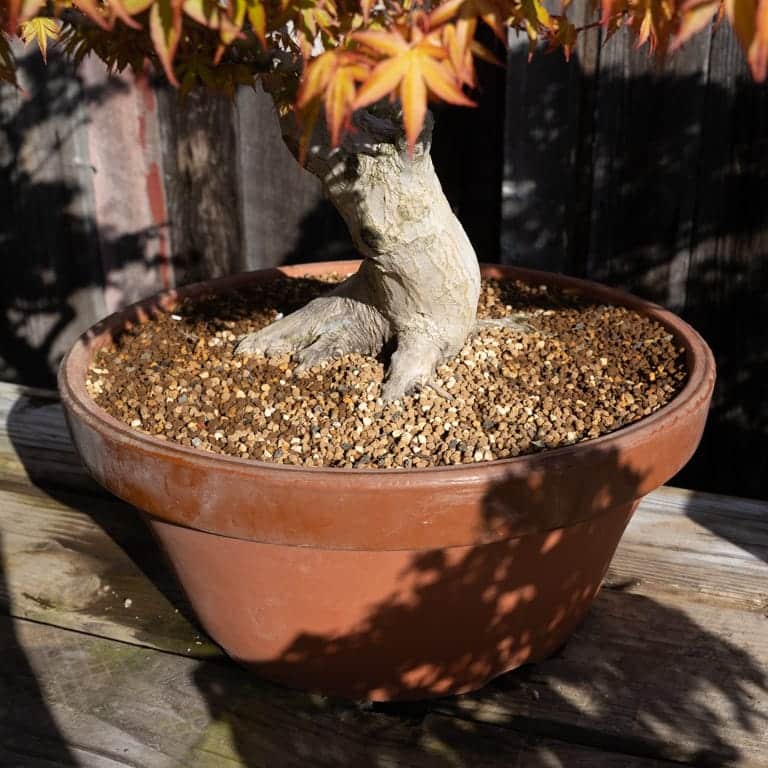
Partially dry surface soil on a Japanese maple
For conifers I’ll generally overhead water every time I pass by a tree with a hose but only water the soil when the surface is dry.
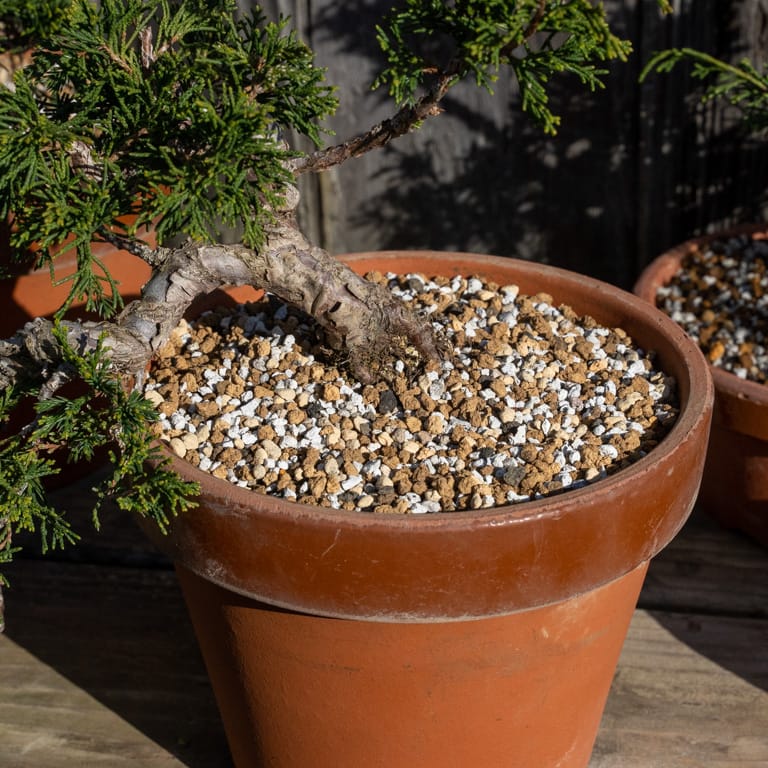
Dry soil – time to water
For azaleas, I’ll water any time the moss on the surface of the soil feels dry to the touch. I follow this approach all year as azaleas like to produce fine roots near the surface of the soil.
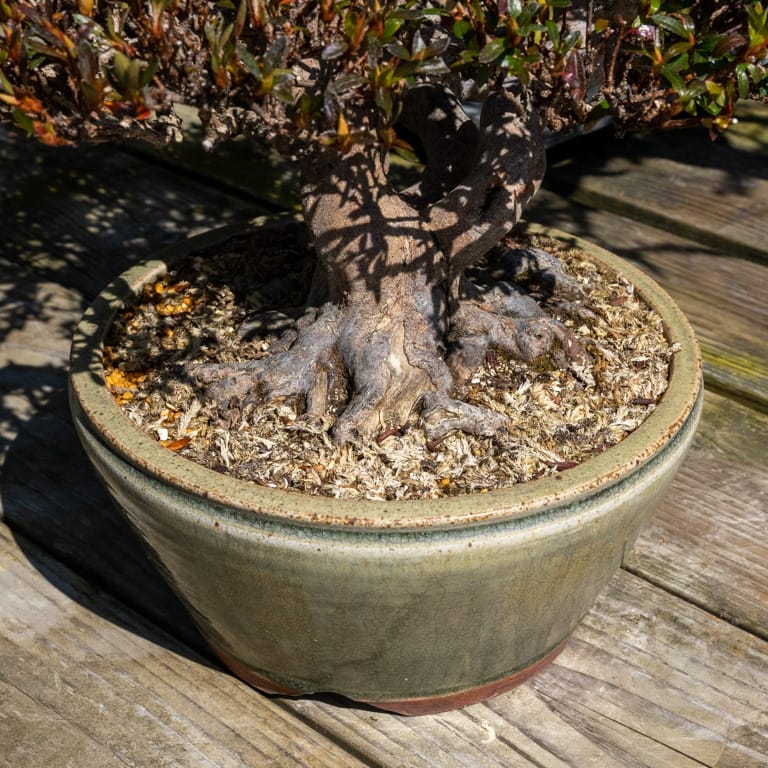
Dry mountain moss on a satsuki azalea
If you’re lucky enough to have a luxurious covering of live moss on the surface of the soil, you’ll have to use other guides as to whether or not the tree needs watering. If the tree was recently repotted, go ahead and water if you suspect the soil is starting to dry out (the moss may be dry to the touch). If the moss is dripping wet, I’ll skip watering and check again later.
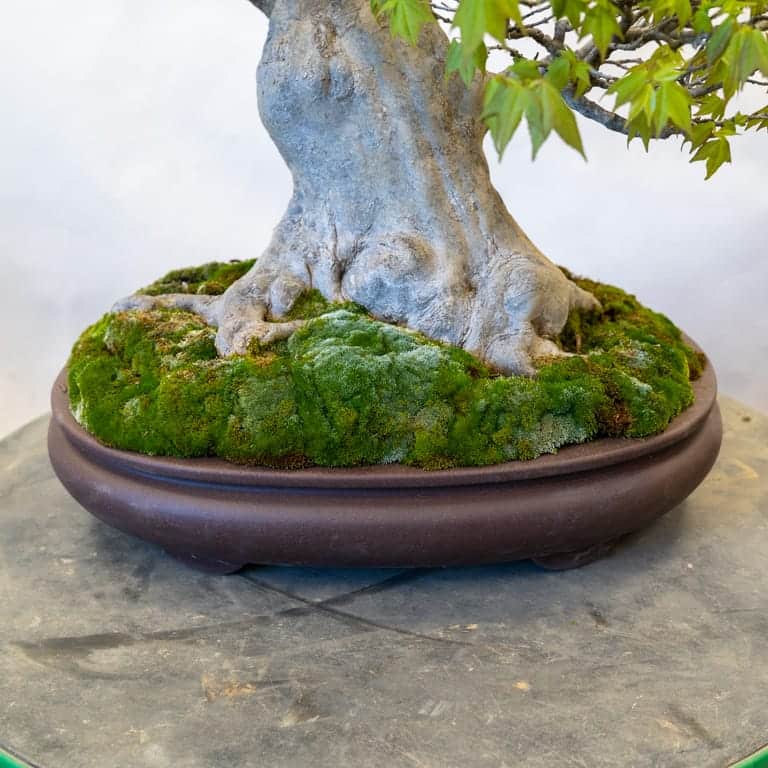
Mounds of live moss
In short, I’ll water if I’m on the fence about it as I want to make sure new roots don’t dry out.
After trees have had a few weeks to root in I’ll start to fertilize the ones that need it. Until that time comes, I’ll keep appreciating the benefits of having freshly repotted trees in the garden!
News and Updates
- I have limited soil available for bulk or wholesale orders including akadama, kanuma, Aoki Blend and pumice. Learn more about bulk soil orders.
- I’m still looking for backup watering help – send me a note if you’d like to learn more.
- The search continues for someone looking to drive from California to this year’s U.S. National Bonsai Exhibition in Rochester, New York. I’m happy to help coordinate, feel free to let me know if you’re interested!
